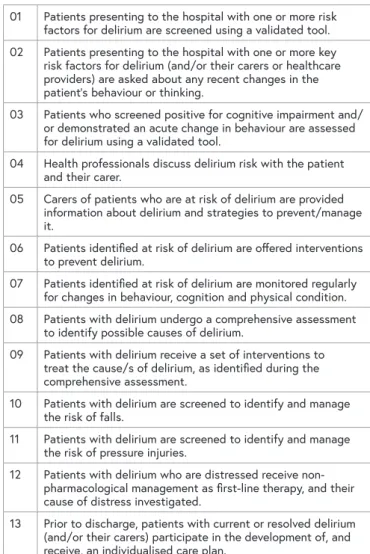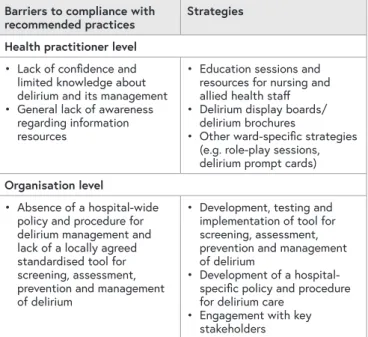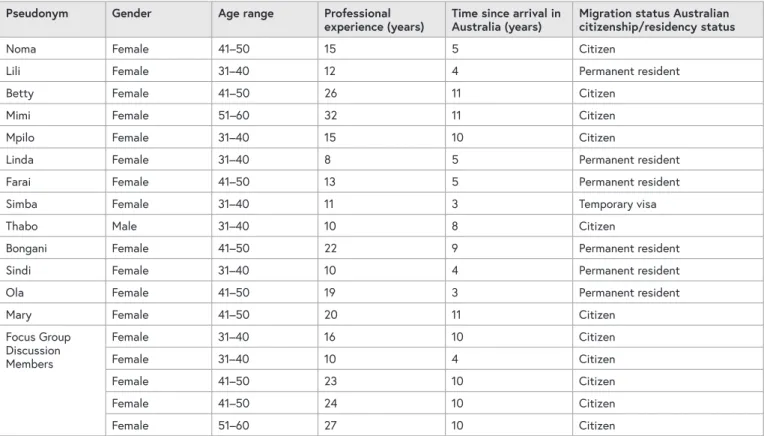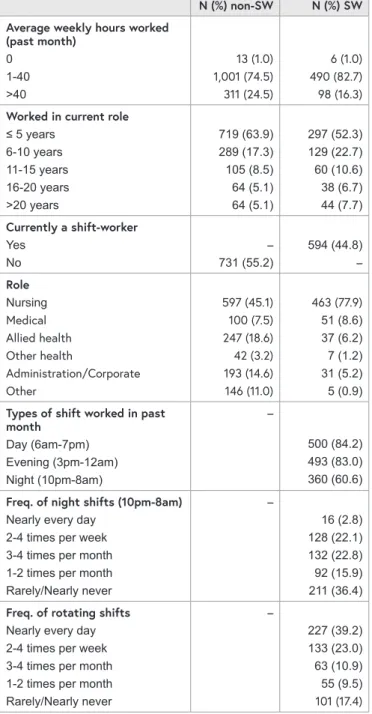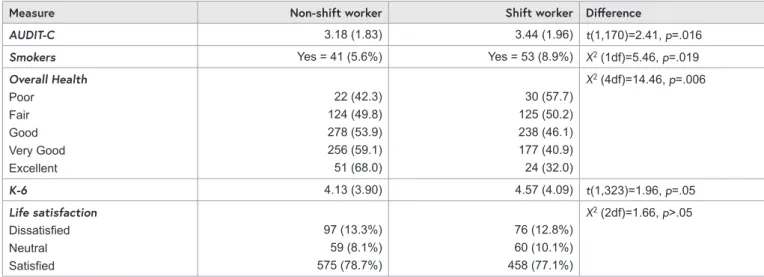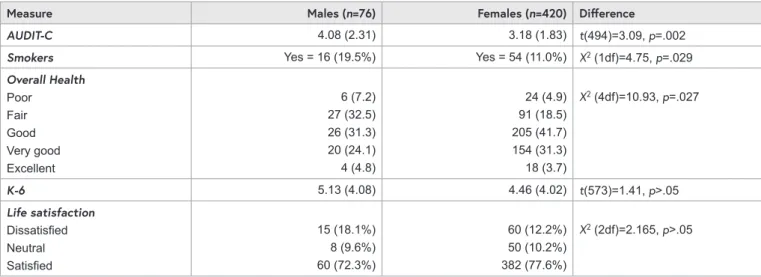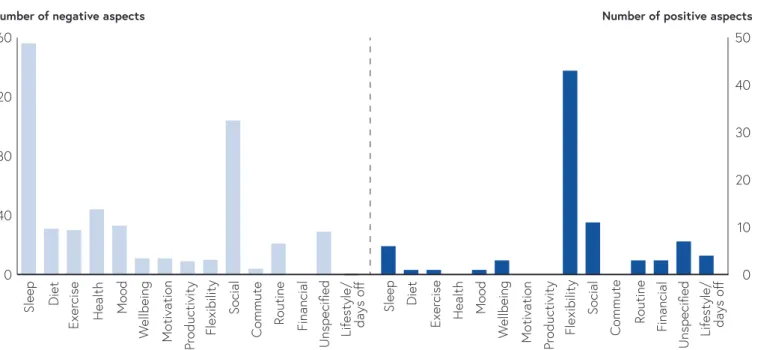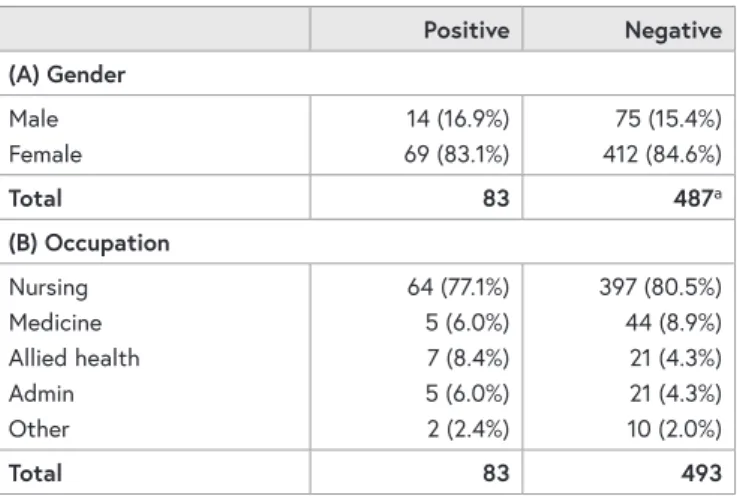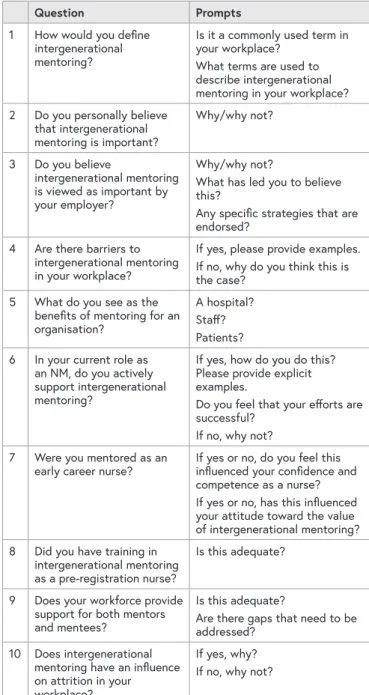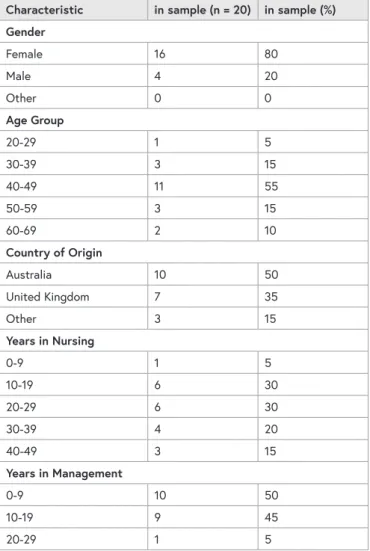An international peer-reviewed journal of nursing and midwifery research and practice
The Australian Journal of Advanced Nursing is the peer-reviewed scholarly journal of the Australian Nursing and Midwifery Federation (ANMF).
The Mission of AJAN is to provide a forum to showcase and promote a wide variety of original research and scholarly work to inform and empower nurses, midwives, and other healthcare professionals to improve the health and wellbeing of all communities and to be prepared for the future.
Publisher and Editorial Office: Australian Nursing and Midwifery Federation • Email: [email protected] • www.ajan.com.au
IN THIS ISSUE
EDITORIAL
Resilience: is it time for a rethink? Moroney T, Strickland K.
PP. 1–2
•
2020.382.526RESEARCH ARTICLES
Improving the quality of delirium practices in a large Australian tertiary hospital:
an evidence implementation initiative.
Cody S, Lizarondo L, McArthur A, et al.
PP. 3–12
•
2020.382.330“It’s only the skin colour, otherwise we are all people”:
the changing face of the Australian Nurse.
Dywili S, O’Brien L, Anderson J.
PP. 13–22
•
2020.382.263 Shift-Work-Play:Understanding the positive and negative experiences of male and female shift workers to inform opportunities for intervention to improve health and wellbeing.
Ogeil RP, Savic M, Ferguson N, et al.
PP. 23–33
•
2020.382.181Nurse managers’ perceptions of mentoring in the
multigenerational workplace:
a qualitative descriptive study.
Coventry T, Hays AM.
PP. 34–43
•
2020.382.230 Nursing undergraduates’perception of preparedness using patient electronic medical records in clinical practice.
Mollart L, Newell R, Noble D, et al.
PP. 44–51
•
2020.382.282 Diabetes care in the early primary school setting:narratives of Australian mothers.
Marks A, Wilson N, Blythe S, et al.
PP. 52–64
•
2020.382.299CASE STUDIES
Improving vaccination uptake with the implementation of an immunisation Nurse Practitioner.
Elia S, Perrett K, Newall F.
PP. 65-68
•
2020.382.264Resilience: is it time for a rethink?
ABSTRACT
We often associate resilience with burnout and link this with an intention to leave in the nursing and midwifery profession. Some believe that nursing and midwifery students are not resilient and that this impacts the development of coping strategies which might be adopted to manage burnout. Students themselves describe their studies as stressful and many report high levels of anxiety. This can impact on the rate of course attrition and the health and wellbeing of students. Higher education providers
are exploring ways of embedding wellbeing strategies which they hope will impact resilience, which will then help these students practice in challenging situations. In addition to considering the ways we teach and assist students, there is a growing focus on improving work cultures that move from individual notions of resilience towards the development of resilient workplaces, allowing nurses and midwives to flourish.
When considering the meaning of resilience and what it means to be resilient, we are presented with a myriad of definitions and inherent complexity in trying to form a definition. Resilience, in broad terms, is a process of adapting well in the face of adversity, stress, or tragedy, and can be described as a character trait that individuals use to develop strategies in order to bounce back in difficult situations.
Burnout is often linked with resilience, occurring when an individual can no longer manage the effects of stress,1 and is one of the issues linked with an intention to leave among nurses and midwives. A growing dissatisfaction with the professions is often associated with a lack of resilience, particularly in early career nurse and midwives.2 The nursing and midwifery professions are often
acknowledged as being stressful and emotionally demanding.
The work demands care is provided to people who are often at some of the most challenging times of their lives, and this impacts on the individuals who seek to provide them with that care. These same challenges also impact nursing and midwifery students. Stress and low resilience have been found in nursing students and the subsequent impact of latent burnout is not clear.3 Health professional students, including nursing and midwifery students, often perceive their education to be stressful and report increasing levels of anxiety, fatigue and a lack of motivation.4 This is often linked to high levels of course attrition, and the health and wellbeing of students is a common discussion point among higher education providers.
There is growing recognition that nurses and midwives need assistance in developing the knowledge and skills to work in challenging and complex environments, and resilience is increasingly viewed as a core graduate capability.5 Promoting resilience in students through
targeted educational interventions might be one method to address workforce burnout. A critical review published in 2009 recommended that all health professional programs include a focus on resiliency.6 This review recommended that higher educational providers provide opportunities that foster positive role modelling, mentoring, and coaching. In addition, the review reinforced the importance of instilling critical reflective and critical thinking skills in curriculum that assists students to foster altruism.
In the last ten years since this review was published, there has been minimal attention to the development of strategies or interventions designed to enhance resilience. This is surprising, given the obvious correlation between stress, burnout, and intention to leave the profession.4 One of the barriers towards improving resilience in the student cohorts, is the lack of a shared definition, common theory or model of resilience. This makes it ‘difficult to develop quality measures of resilience’,4(p70) and to determine whether any strategies we develop are effective.
Resources that assist students to engage in identity building, capacity and strengths development, and leadership, are well placed to facilitate resilience, and when used have shown a shift towards proactive promotion of resilience.4 However, many of these resources and their delivery methods were not well evaluated. Only one research study described a whole curriculum approach suggesting that while there are pockets of good work on developing resilience in the student population, further work must be achieved if real differences are to be made.7
Some educational providers have adopted approaches to foster student resilience including mentoring and coaching through linkage with industry providers. Some providers partnered final year students with those in earlier years,
assisting students to share experiences, and providing avenues for final year students to provide tips which
facilitated reflection and constructive thinking.8 Mindfulness based stress reduction and conflict resolution training have also been found to positively impact on resiliency, as have training programs that promote self-regulation, self-care and interpersonal relationships.1 Experiential learning, critical reflection and creativity have also been identified as useful methods for promoting resilience.5
While local strategics and resources have been used, it is clear that higher education providers must engage in transformative educational methods. Exploring how we teach, rather than what we teach is necessary if we are to facilitate the development of skills needed to promote resilience.
There is growing recognition of the need to move from individual notions of resilience towards the development of resilient workplaces in order for nurses and midwives to flourish. The impact of workplace culture and support is increasingly thought to impact on individual levels of resilience. For example, individuals who may have previously been ‘resilient’, may be susceptible to stress and burnout if the workplace environment is not supportive. Workplaces that support staff and students to have a sense of purpose, value person-centredness, and support the development of competencies and autonomy, are thought to support flourishing and reduce burnout.9
More recently, a qualitative study of community pharmacists highlighted that during the early stages of the COVID-19 pandemic, staff working in community pharmacies that invested in supportive actions such as changing shift length and providing sustenance were more able to respond and adapt to the stressful situation of working during a global pandemic.10 There are lessons here for how we support students through clinical practice placements. Throughout the pandemic education providers have worked in tandem with health care providers to ensure the safety and support of students on placements while recognising the unique stresses that the clinical environment has been under.
Professor Tracey Moroney
Faculty of Science, Medicine and Health, University of Wollongong, New South Wales, Australia
Professor Karen Strickland
School of Nursing Midwifery and Public Health, University of Canberra, Australian Capital Territory, Australia
REFERENCES
1. Brown S, Whichello R, Price S. The impact of resiliency on nurse burnout: an integrative literature review. Medsurg Nurs. 2018;
27(6): 349–8.
2. Concilio L, Lockhart J, Oermann M, Kronk R, Schreiber J. Newly licensed nurse resiliency and interventions to promote resiliency in the first year of hire: an integrative review. J Contin Educ Nurs. 2019; 50(4): 153–61.
3. Sam P, Lee P. Do stress and resilience among undergraduate nursing students exist? Int J Nurs Educ. 2020; 12(1): 146–9.
4. Sanderson B, Brewer M. What do we know about student resilience in health professional education? A scoping review of the literature. Nurse Educ Today. 2017; (58): 65-71.
5. McGowan J, Murray K. Exploring resilience in nursing and midwifery students: a literature review. J Adv Nurs. 2016;
72(10): 2272–83.
6. McAllister M, McKinnon J. The importance of teaching and learning resilience in the health disciplines: a critical review of the literature. Nurse Educ Today. 2009; 29(4): 371–9.
7. Slavin S, Schindler D, Chibnall J. Medical student mental health 3.0: improving student wellness through curricular changes.
Acad Med. 2014; 89(4): 573 - 7.
8. Beckman H. The role of medical culture in the journey to resilience. Acad Med. 2015; 90(6): 710–2.
9. Dewing J, McCormack B. Editorial: Tell me, how do you define person-centredness? J Clin Nurs. 2017; 26: 2509–10.
10. Austin Z, Gregory P. Resilience in the time of pandemic:
the experience of community pharmacists during COVID-19.
Res Soc Admin Pharm. 2021; 17(1): 1867–75.
ABSTRACT
Objective: The aim of the evidence implementation initiative was to improve the quality of care delivered to hospitalised patients at risk of, or with, delirium through the implementation of best practice recommendations.
Background: Delirium is a prevalent serious medical condition that remains unrecognised or misdiagnosed in acute hospitals and is therefore left untreated. This paper reports on a hospital-wide quality improvement project which was undertaken in recognition of the Australian Delirium Clinical Care Standard and as a response to the cumulative rate of hospital-acquired delirium within a health organisation in New South Wales, Australia.
Methods: The quality improvement project used the JBI (formerly known as Joanna Briggs Institute) evidence implementation framework. Briefly, the JBI evidence implementation approach is grounded in the audit, feedback and re-audit process along
with a structured process for the identification and management of barriers to compliance with recommended clinical practices. Twelve nurses, who received support from external facilitators (implementation researchers), acted as delirium champions.
Results: Baseline audit of 143 patient notes showed poor compliance (range 6% – 67%) to recommended practices relating to screening, assessment, prevention and management of delirium.
Barriers analysis revealed nurse-related (eg. lack of knowledge) and organisational level factors (e.g. absence of a hospital-wide policy/procedure for delirium management). A multicomponent strategy was implemented by all delirium champions in their respective units/wards. Follow-up audit of 151 patient notes demonstrated significant improvements in compliance with best practice recommendations for all aspects of delirium care.
CORRESPONDING AUTHOR
LUCYLYNN LIZARONDO JBI, University of Adelaide, South Australia, Australia Email: [email protected]
AUTHORS
SIOBHAN CODY RN BN1 LUCYLYNN LIZARONDO PhD2
ALEXA MCARTHUR RN RM MPHC MClinSc2 AMY BARZEN RN BN(Hons) GCertClinN1 CHRIS LADERA RN BSc MN GCertCritCare1 SERAFINA LEVAK RN BN GCertCancer/
Palliative Care1
BETH MCALARY RN BN MEmergN1 OLIVIA MISA RN BN1
MARIA SENATORE RN BScNursing CertGenNursing GCertOncNursing GDipPallCare MClinNursing (ClinicalNursing&Teaching)1
CHRYSAFI TSIGOUNIS RN BN1
JOANNE TAYLOR RN BN GCertDiab MScDiab1 ANNA THORNTON RN MN1
1 St Vincent’s Hospital Sydney, New South Wales, Australia 2 JBI, University of Adelaide, South Australia, Australia
Improving the quality of delirium practices in a large Australian
tertiary hospital: an evidence
implementation initiative
BACKGROUND
Delirium is a serious medical condition that can develop in hospitalised patients, particularly among older individuals over the age of 65, palliative care populations, oncology patients, and individuals who have undergone transplant or major surgical procedures.1-3 Over 30% of hospitalised patients over 65 years of age will experience delirium in the medical ward setting and up to 88% of inpatients with advanced cancer.4,5 Hospitalised patients who develop delirium are at an increased risk of serious adverse outcomes including long-term functional and cognitive decline, increased risk of falls and harm from falls, and medical complications, which can then lead to prolonged hospital stays, need for institutional care and reduced quality of life.1,6-8 Previous studies have shown an association between delirium and premature death, with mortality rates ranging between 22 and 76% for those who developed delirium during hospitalisation. Delirium also imposes significant financial burden in the health system.9,10 In Australia, for example, the total cost of delirium was estimated at AUD$8.8 billion in 2016–2017.10 Given the significant morbidity and mortality, and the associated economic burden, it is important that delirium is identified early so that appropriate management and preventive measures can be implemented.
Delirium is a medical emergency, management of which requires early detection, identification of the cause and management of symptoms. The emphasis is on primary prevention using multicomponent, non-pharmacological interventions targeted to high-risk patients.11,12 Various screening instruments, such as the Confusion Assessment Method (CAM), 4As Test (4AT), Delirium Triage Screen (DTS), Delirium Rating Scale (DRS) and Nursing Delirium Screening Checklist (NuDESC), have been developed to identify
high-risk patients as well as diagnose and rate the severity of delirium.13 Once delirium is detected, a comprehensive assessment is required and management strategies implemented. These include removal and/or treatment of causative factors and in the first instance, management of symptoms using non-pharmacological approaches, reserving pharmacological interventions only where required. Typically, the management of delirium involves a multicomponent approach that includes reorientation, adequate hydration and nutrition, sleep promotion, early mobilisation, reduction of psychoactive drugs and optimising use of vision and hearing devices.12 It also requires an interdisciplinary approach that includes doctors, nurses and rehabilitation therapists along with well-informed and engaged families or caregivers. Families or caregivers, when provided with adequate information about the nature of delirium, symptoms and their integral role in the prevention Discussion: The quality improvement activity
highlighted that education remains one of the most important and critical first steps in facilitating change in clinical practice. Critical to the success of the project was the collaborative approach of the delirium champions across various specialties, which allowed for the sharing of expertise, knowledge and consensus-based decision making. The facilitation provided by the delirium champions and external facilitators was also a vital ingredient for the successful implementation of evidence-based practices.
Conclusion: The quality improvement activity has improved nurses’ screening and assessment of patients at risk of or with delirium, leading to improvements in its prevention and management.
Collaborative efforts within the organisation facilitated the development of a standardised, evidence-based tool for delirium screening,
assessment, prevention and management, and staff education resources. Partnership with patients and/
or their families through education remains an area for ongoing improvement, as with discharge planning for patients with current or resolved delirium.
What is already known about the topic?
• Delirium care is a major challenge among healthcare practitioners and therefore the condition remains prevalent in many acute
hospitals. In Australia, delirium has been identified as a high priority area for quality improvement.
The Australian Commission on Safety and Quality in Health Care released the Delirium Clinical Care Standard to ensure that patients at risk of delirium are identified early and receive preventative strategies, and that those with delirium receive optimal treatment to address their condition.
What this paper adds:
• This paper offers a detailed approach for evidence implementation to improve the quality of care delivered to hospitalised patients at risk of or with delirium. Key enablers were strong leadership support, sharing of experiences and knowledge, and the collective effort to problem solve and develop tools and resources for delirium.
Keywords: Delirium, evidence implementation, quality improvement, facilitation, audit and feedback
and management of delirium, can significantly assist in enabling healthcare professionals to provide patient-centred delirium care.14 Patients with delirium require close clinical monitoring to ensure their safety, prevent complications, such as falls and pressure injuries, and to avoid emergence of factors that can worsen the delirium.15
Despite the high prevalence and associated adverse
outcomes, and the potential to prevent occurrence, delirium remains unrecognised or misdiagnosed in acute hospitals and may therefore be left untreated.16 Recent studies suggest that between 24 and 61% of hospitalised patients with delirium were undiagnosed and only about 13.6% of cases received a comprehensive care plan. 7,17,18 A recent study has also shown that there was significant variability in the way healthcare professionals respond to hospitalised patients with signs of delirium, that many actions were reactive instead of anticipative and preventive, and that the care provided was deficient and often not systematic and consistent.19 Delirium recognition and management appears to be a major challenge among healthcare practitioners and barriers to early detection exist at an individual and organisational level. Individual level barriers consist of lack of education and awareness of delirium,20-23 perception that it is not a priority,20 and lack of confidence with delirium assessment.21 Organisational barriers include a lack of guidelines or system integration translating delirium knowledge into the workplace,22 lack of locally agreed screening, assessment and diagnostic tools,22,23 the low priority assigned to delirium management,20 perception of being an ‘orphan’ condition (i.e. delirium does not belong to a specific specialty),20 heavy workload,22 and lack of leadership support.21
Within Australia there has been a growing awareness and concern about delirium, with delirium being identified by the Australian Commission on Safety and Quality in Health Care (ACSQHC) as a high priority area for quality improvement. The Commission established the Clinical Care Standards program to develop clinical care standards on health conditions that would benefit from a national coordinated approach. In 2016, the ACSQHC released the Delirium Clinical Care Standard to ensure that patients at risk of delirium, during their hospital admission, are identified early and receive preventative strategies.16 The Standard also ensures that patients with delirium at the time of presentation to the hospital receive optimal treatment to address their condition.
The quality improvement activity reported in this paper was undertaken in recognition of this Standard and as a response to the cumulative rate of hospital-acquired delirium within the health organisation. The project was conducted in a 360-bed metropolitan tertiary hospital in New South Wales (NSW), Australia. In 2018, 299 episodes of hospital-acquired delirium were recorded in the facility.24 Rate of hospital- acquired delirium for the 2018/19 financial year was 8.1
occasions per 1,000 separations (admissions).24 This rate was 3.0 occasions per 1,000 separations higher when compared to the NSW Hospital Peer Group.24 Prior to undertaking the quality improvement activity, the organisation had already identified the following issues that impact on their delirium practices: a general lack of knowledge about delirium and its management, lack of a locally agreed screening and assessment tool, and absence of a hospital-based policy and procedure for screening, assessment, prevention and management of delirium. These were the impetus for change and prompted the nursing department of the hospital to launch a hospital-wide quality improvement project to facilitate the implementation of best practice in delirium care and optimise hospitalised patient outcomes.
AIMS OF THE QUALITY IMPROVEMENT PROJECT
The overall aim of the project was to improve the care delivered to hospitalised patients at risk of, or with, delirium through the implementation of evidence-based delirium practices. There were three specific objectives:
• To establish baseline practice in terms of delirium screening, assessment, prevention and management
• To develop and implement strategies for improving delirium practices based on identified barriers to compliance with best practice recommendations
• To evaluate changes in delirium practices following the implementation of identified strategies
METHODS
ETHICS
The project was registered as a quality improvement activity within the hospital, and therefore did not require ethical approval.
DESIGN
This quality improvement project used the JBI (formerly known as Joanna Briggs Institute) Evidence Implementation framework.25 Briefly, the JBI Implementation approach is grounded in the audit, feedback and re-audit process along with a structured approach to the identification and management of barriers to compliance with recommended clinical practices. It consists of seven stages including:
(1) identification of practice area for change, (2) engaging change agents, (3) assessment of context and readiness to change (i.e. situational analysis), (4) review of practice (i.e. baseline audit) against evidence-based audit criteria, (5) implementation of changes to practice, (6) re-assessment of practice using a follow-up audit, and (7) consideration of the sustainability of practice changes.
PROCESS
From the commencement of the project there was strong senior leadership support from the Executive team who consistently demonstrate commitment to continuous quality improvement and evidence-based health care. Nursing unit managers were actively engaged and agreed to ensuring protected time for staff involved in leading the project.
Following the identification of delirium as a priority area for improvement in the hospital, a call for expressions of interest were sought from registered nurses who were interested in acting as a change agent for each participating unit/ward. To be eligible, nurses (referred to as delirium champions) had to have a strong interest in delirium care and possess leadership skills. Their role as change agents involved participating in the JBI Clinical Fellowship Training Program,26 organising a project team, developing a quality improvement project plan and leading the project at their local unit/ward level.
Participating wards were known to represent patient groups at high risk of developing delirium and included: an emergency department, a specialty medical unit (comprising specialties including oncology, immunology, infectious diseases and other general medical specialties), haematology and bone marrow transplant, palliative care, heart and lung stream critical care wards, rehabilitation, mental health emergency services and an acute aged care ward.
As part of the JBI Clinical Fellowship Training Program, two experienced evidence implementation researchers were assigned to the project as ‘facilitators’ to assist with the development of local ward project plans, ensure projects progressed as planned and provide feedback and as-needed support (e.g. access to evidence-based resources, data analysis) to delirium champions. Monthly meetings between delirium champions and facilitators were organised to report project updates and discuss any issues that might impact the project.
DATA COLLECTION AND SAMPLING
Prior to the baseline audit, delirium champions collectively performed a situational analysis via round table discussions, and considered the following: resource availability,
interdisciplinary relationships, workplace culture, leadership support, communication systems for information exchange, knowledge and skills of healthcare staff and commitment to quality management. These confirmed the organisation’s overall readiness for change in terms of delirium practice.
Best practice recommendations from delirium clinical guidelines and the ACSQHC Delirium Clinical Care Standard were summarised and distilled into audit criteria (Table 1),16,27-33 which served as the basis for undertaking the clinical audit (both for baseline and follow-up). Following the development of audit criteria, an audit guide was developed to ensure standardised and reliable data collection for each criterion. Delirium champions and the facilitators
collaborated to determine the source of data, sample size and how each criterion was to be measured to determine compliance. For validation, the delirium champions pilot- tested the audit guide, and revisions to the guide were made accordingly after the pilot testing.
TABLE 1: AUDIT CRITERIA FOR BASELINE AND FOLLOW-UP AUDIT
01 Patients presenting to the hospital with one or more risk factors for delirium are screened using a validated tool.
02 Patients presenting to the hospital with one or more key risk factors for delirium (and/or their carers or healthcare providers) are asked about any recent changes in the patient’s behaviour or thinking.
03 Patients who screened positive for cognitive impairment and/
or demonstrated an acute change in behaviour are assessed for delirium using a validated tool.
04 Health professionals discuss delirium risk with the patient and their carer.
05 Carers of patients who are at risk of delirium are provided information about delirium and strategies to prevent/manage it.
06 Patients identified at risk of delirium are offered interventions to prevent delirium.
07 Patients identified at risk of delirium are monitored regularly for changes in behaviour, cognition and physical condition.
08 Patients with delirium undergo a comprehensive assessment to identify possible causes of delirium.
09 Patients with delirium receive a set of interventions to treat the cause/s of delirium, as identified during the comprehensive assessment.
10 Patients with delirium are screened to identify and manage the risk of falls.
11 Patients with delirium are screened to identify and manage the risk of pressure injuries.
12 Patients with delirium who are distressed receive non- pharmacological management as first-line therapy, and their cause of distress investigated.
13 Prior to discharge, patients with current or resolved delirium (and/or their carers) participate in the development of, and receive, an individualised care plan.
The baseline and follow-up audit was performed over three- month periods (April – June 2019 and Oct – Nov 2019) using the Clinical Excellence Commission’s Quality Auditing Reporting System (QARS), which is a web-based audit hosting platform. Baseline and follow-up audit data were collected from clinical notes of patients admitted in the participating wards/units. A staff survey was also administered at baseline to determine nurses’ knowledge and confidence in managing patients with delirium. The survey consisted mostly of Likert-type questions, with a few that asked the staff to list their answers (e.g. commonly used strategies for delirium).
In addition, the rate of hospital-acquired delirium in the hospital was reviewed before and after the project, and compared with peer hospitals’ rate of delirium.
DATA ANALYSIS
Descriptive analyses of baseline and follow-up compliance data, using frequency counts and percentages, were conducted using Microsoft Excel.
SUSTAINABILITY PLANNING
After the follow-up audit, delirium champions convened with the ‘facilitators’ to discuss strategies for ensuring practice improvements which were sustainable and plan for future audits. Areas of focus for further improvements in delirium care were identified and prioritised.
RESULTS
CHARACTERISTICS OF THE DELIRIUM CHAMPIONS A total of 12 nurses participated in the project: four clinical nurse educators, two clinical nurse consultants, two registered nurses, two clinical nurse specialists, one nurse manager and one acting nurse unit manager.
BASELINE AUDIT
Baseline audit data were collected from the clinical notes of 143 patients admitted in the following wards/units:
haematology and transplant unit n = 10; speciality medical unit n = 10; emergency department n = 14; rehabilitation units n = 26; mental health unit n = 4; palliative care unit n = 16; acute aged care unit n = 20; surgical unit n = 8; coronary care unit n = 16; cardiac surgery unit n = 10; neurology and stroke unit n = 10. At baseline, 172 nursing staff completed the survey. Clinical notes selected for audit contained either a delirium diagnosis code (based on the International Statistical Classification of Diseases and Related Health Problems, Tenth Revision, Australian Modification) or one of the delirium key risk factors outlined within the ACSQHC Delirium Clinical Care Standard.16 Where possible, half of the clinical notes audited in each ward or unit were coded with a delirium diagnosis.
Initial compliance to the majority of audit criteria (n=10/13) was poor (range 6 – 67%), as shown in Figure 1; compliance was considerably higher (82 – 83%) for other criteria relating to monitoring of at-risk patients, and screening for and management of risk for falls and pressure injuries.
BARRIERS TO COMPLIANCE WITH RECOMMENDED DELIRIUM PRACTICES
Following the baseline audit, delirium champions held group sessions with their project teams to identify barriers to compliance with the recommended practices (as reflected in the audit criteria). Project teams consisted of key stakeholders from the specific wards including nursing staff, physiotherapists, occupational therapists, geriatric physicians and specialists. Barriers analysis
revealed nurse-related and organisational level factors that hindered compliance to recommended practices in delirium care. Nurses generally lacked confidence in their assessment and management skills with respect to delirium.
Survey responses indicated that they felt they had limited knowledge about delirium and its management, including screening, assessment, prevention and treatment. There was also a general lack of awareness regarding information resources about delirium and support for patients and their families, and a lack of access to these resources. On an organisational level, the lack of a locally agreed standardised tool to facilitate screening, assessment, prevention and management of delirium and the absence of a hospital- wide policy and procedure for delirium management were identified as key barriers.
MULTI-COMPONENT STRATEGY
The delirium champions convened to discuss strategies which could be implemented hospital-wide, to provide a collaborative approach to the development of resources.
Given the multifactorial causes of non-compliance to recommended practices, a multicomponent strategy was implemented by all delirium champions in their respective units/wards. Table 1 outlines the different strategies targeted to the identified barriers.
TABLE 1: SUMMARY OF STRATEGIES ADDRESSING THE IDENTIFIED BARRIERS TO COMPLIANCE WITH RECOMMENDED DELIRIUM PRACTICES
Barriers to compliance with
recommended practices Strategies Health practitioner level
• Lack of confidence and limited knowledge about delirium and its management
• General lack of awareness regarding information resources
• Education sessions and resources for nursing and allied health staff
• Delirium display boards/
delirium brochures
• Other ward-specific strategies (e.g. role-play sessions, delirium prompt cards) Organisation level
• Absence of a hospital-wide policy and procedure for delirium management and lack of a locally agreed standardised tool for screening, assessment, prevention and management of delirium
• Development, testing and implementation of tool for screening, assessment, prevention and management of delirium
• Development of a hospital- specific policy and procedure for delirium care
• Engagement with key stakeholders
All strategies focused on improving health practitioners’
knowledge about delirium screening, assessment, prevention and management, and increasing nurses’ assessment of patients who might be at risk of developing delirium. To achieve these outcomes, the following strategies were implemented:
• A standardised tool for screening, assessment, prevention and management of delirium (please contact authors for access to the tool): The delirium champions developed and tested a tool that addressed recommended practices for delirium screening, assessment, prevention and management. The tool was developed in collaboration with the hospital’s ‘Delirium and Cognitive Impairment Community of Practice,’ which consists of a
multidisciplinary group of experienced clinicians with a particular expertise in delirium. The tool comprised a validated screening and assessment tool (4AT),13 a list of preventative strategies as well as assessment and management strategies for those presenting with an acute delirium. The tool provided a one-stop resource for nurses involved in managing patients who might be at risk of delirium. In some wards/units, the tool was incorporated in ward admission packs for ready access as well as serving as a prompt for nursing staff to screen for risk of delirium when admitting a patient.
• A hospital-specific policy and procedure for delirium care
• Education for nursing and allied health staff: a standardised PowerPoint presentation on delirium was developed by the aged care clinical nurse consultant. This included information related to the prevalence, types, risk factors and causes of delirium, including principles and strategies for screening, assessment, prevention and management of delirium. Additional information were included in the face-to-face in-services to tailor the training to participating specialty units. Education on the use of the delirium tool (mentioned above) was also provided to all relevant staff.
Face-to-face sessions, which lasted from 30 minutes to an hour, were delivered over a 12-week period by the delirium champions and respective clinical nurse educators of the different clinical areas. During sessions, staff were encouraged to ask questions and were encouraged to seek further support if required. A total of 345 nurses (84% of the ward/unit workforce) and 20 occupational therapists (OT) (83% of total OT workforce) were educated during the course of the project. Informal education was delivered to junior medical officers focusing on the tool and the role of medical officers in delirium prevention and management.
As this was an informal process there were no records kept of attendance. A delirium folder containing the resources used in the education sessions and delirium brochures were ordered and organised to provide access to delirium information. Delirium information posters were also displayed on wards to reinforce the education provided during face-to-face sessions.
• Resources for patients: a delirium brochure developed by the Agency for Clinical Innovation (ACI) was included in admission packs for dissemination to patients and their caregivers.34 The brochure contains easy-to-understand information about the symptoms, causes and course of delirium, and how it can be managed.
• Display boards: The ACI delirium brochure and other delirium posters were used as reminders, provided ready access to information and raised delirium awareness.34 The ACI CHOPS sunflower was displayed at the patient’s bedside to collect important patient-centred information about the patient that can help re-orientate those who might have cognitive impairment.35
• Engagement with key stakeholders: flow manager discussed ‘flagging’ the high-risk patients on the patient flow portal in order to swiftly identify those patients at risk to nurse managers in charge of bed allocations and movements.
• Other ward-specific strategies: Staff of the aged care ward used ID flip cards that included best practice recommendations for delirium care. A role-play session was also conducted in this ward to demonstrate that the time requirements for completing the delirium tool is short and reasonable, which was contrary to the staffs’
perceived burden of completing another assessment/form.
To improve the orientation of their patients, the palliative care ward sought funding for the purchase of digital clocks and calendars. In the emergency department, Six-Minute Intensive Training tools were distributed to staff during morning or evening shift safety huddles and lanyard Delirium Risk prompt cards were also provided to all nursing and medical staff.
FOLLOW-UP AUDIT VERSUS BASELINE AUDIT Follow-up data were collected from clinical notes of 151 patients (haematology and transplant unit n = 10;
speciality medical unit n = 10; emergency department n = 20; rehabilitation units n = 9; mental health unit n = 15; palliative care unit n = 15; acute aged care unit n = 20;
coronary care unit n = 20; cardiac surgical unit n = 24; surgical unit n = 8). Clinical notes were selected for audit using the same methodology outlined above in baseline audit. The compliance rate for all audit criteria improved (as shown in Figure 1) following the implementation of strategies.
DELIRIUM RATES
The rate of hospital-acquired delirium at this tertiary hospital decreased post implementation of the quality improvement activity. Rate of hospital-acquired delirium for the 2019/20 financial year was 7.1 occasions per 1,000 separations (admissions), compared to 8.1 the previous 2018/19 financial year.24 This equates to a 12.3% decrease pre-implementation compared to post-implementation.
Further, the difference in rate of hospital-acquired delirium between the tertiary hospital and its NSW Hospital Peer Group was 3.0 occasions per 1,000 separations in 2018/19.24 This difference narrowed to 1.7 occasions per 1,000 separations in the post implementation year 2019/20.
DISCUSSION
This quality improvement activity achieved its aim of improving the care delivered to hospitalised patients at risk of or with delirium, as demonstrated by increased compliance to recommended practices for delirium care.
As a result of this activity, a standardised tool for delirium screening, assessment, prevention and management has been implemented in the hospital along with a locally agreed policy and procedure for delirium care. This resource was key to increasing screening and assessment of patients at risk of developing delirium, which prompted early intervention for preventative measures. Also critical to the success of the project was the collaborative approach of the delirium champions across various specialties, which allowed for the sharing of expertise, knowledge and consensus-based decision making. Partnership with patients and/or their families through education remains an area for ongoing improvement, as with discharge planning for patients with current or resolved delirium.
One of the vital ingredients for successful implementation of evidence into practice is ‘facilitation.’ Facilitation has been defined as ‘a technique by which one person makes things easier for others’,36 and is both a process and a role (facilitator).37 For this quality improvement activity, facilitation occurred internally via the delirium champions as well as externally through the facilitators who provided as-needed support to the champions. A core responsibility of the delirium
champions was to drive the practice change and act as an ongoing resource person for the quality improvement activity. They also performed a range of other activities including education of staff about delirium, assessment of local practice through audits and barrier analysis, evaluation of practice change, and peer support. On the other hand, external facilitators provided evidence implementation education and technical research support, and ensured the project was on track. These activities are congruent with the findings of previous studies on facilitation, which highlighted that successful facilitation efforts in health organisations involve both internal and external facilitation.38,39 As highlighted in the literature, internal facilitation capacity is critical in creating a sustainable infrastructure for implementation activities, while
external facilitation is key for providing support to internal facilitators in creating organisational facilitation capacity.40,41 This strategic partnership supports an integrated approach to promoting evidence-based practices, for which both implementation scientists and frontline clinicians agree is ideal for sustainable practice change.42,43
Effective health care delivery is highly dependent on teamwork that draws on the expertise of each team member and pooling this expertise to collectively deliver safe and high-quality health care. Key enablers for the current project were the constructive discussions, sharing of experiences and knowledge, and the collective effort to problem solve and develop tools and resources for delirium practice FIGURE 1: BASELINE AND FOLLOW-UP COMPLIANCE WITH AUDIT CRITERIA
Baseline audit Follow-up audit
0.0 0.2 0.4 0.6 0.8 1.0
13. Patients with current or resolved delirium receive an individualised care plan 12. Patients with delirium receive non-pharmacological management as first-line therapy 11. Patients with delirium are screened for pressure injuries 10. Patients with delirium are screened for falls 9. Patients with delirium receive a set of interventions 8. Patients with delirium undergo a comprehensive assessment 7. At risk patients are monitored regularly 6. At risk patients are offered interventions 5. Carers are provided information about delirium 4. Health professionals discuss delirium risk with patients/carers 3. Patients are assessed using a validated tool 2. Patient/carers are asked about any recent changes in behaviour or thinking 1. Patients are screened using a validated tool
improvements. The complex nature of delirium suggests that the task required to improve clinical practice is also complicated and requires a team effort. One of the key strategies for this quality improvement activity was the delirium screening and assessment tool also outlining preventative and treatment interventions. The tool was developed and validated collectively by the delirium champions, with input from frontline clinicians and delirium specialists. This level of engagement by relevant stakeholders within the organisation highlighted a sense of ownership and a strong commitment to improve delirium practices. This is in line with the findings of a recent study which suggested that delirium care requires a ‘choreographed dance of teamwork and integration across services’ in order to be effective.44 Psychological and organisational research also supports the notion that improving teamwork is a viable strategy for enhancing care coordination and optimising the quality of health care outcomes.45
This quality improvement activity highlights that education remains one of the most important and critical first steps in facilitating change in clinical practice. Staff feedback at the commencement of the project identified that ‘risk for delirium’ was not common terminology, with only a few clinicians understanding the plethora of risk factors associated with this condition. Assessment for delirium was also unheard of by many nursing staff, with only a select few units, such as the aged care ward and the intensive care unit, performing routine cognitive assessments as part of their preventative and diagnostic pathways. Discussions about delirium risk and prevention were essentially absent from the nursing and medical handover terminology within the organisation. When it did occur, delirium was often informally diagnosed on the basis of a presenting history, collateral information from family members, carers or general practitioners, and relevant signs and symptoms. It is well-recognised in the delirium literature that informal, clinical delirium rating is inadequate for accurately detecting delirium.46 It is for these reasons that education was the key strategy required to improve the current delirium practice.
Research evaluating the effect of educational interventions on delirium recognition showed improved staff performance and adherence to delirium protocols.47,48 Literature also identified effective enabling and reinforcing strategies for education and included the use of champions, feedback on staff performance and use of protocols, which were similar to the approaches used in the current project. Therefore, it appears that the most effective educational approaches to improving delirium practices are multifaceted and include other enabling strategies in addition to knowledge transmission.
Person-centred care is a hallmark of good quality clinical practice. It relies on reciprocal communication between the patient (and/or their family) and health professionals, and recognises the uniqueness and value of the individual.49,50 Implementation of the delirium tool enabled nurses an opportunity to obtain relevant information from the
patient’s family that could then be used to individualise the care provided. However, it remains unclear whether nurses actually engaged and initiated discussions with patients and/
or their families when they provided them with educational/
information pamphlets or brochures. Patient and/or family participation in the development of care plans were also suboptimal. As with other conditions, it is important to ensure that patients and their families establish a meaningful interaction with their health practitioners, and are able to understand the information they receive and are provided opportunities to clarify and ask questions. The literature suggests that, although it can be quite challenging, person- centred delirium care can be delivered effectively using context-informed strategies.49,51 The delirium champions have agreed that this should be the focus of their future audits, and consistent with the approach of the current project, addressing the factors that assist or hinder acceptance and implementation of person-centred care is a crucial step.
Although positive changes in delirium practice were achieved, there are still many areas of delirium care that are suboptimal and require attention. The reasons for this are likely multifactorial. Firstly, the documentation of some of the care provided to patients remains poor. For example, the delirium champions have observed that patients and carers were provided education by relevant staff, and yet there was poor documentation that this had taken place. Preventative measures such as regular mobilisation, orienting patients to time, place and person, and maintenance of hydration and nutrition, although common practice, were also not captured in patient records. Secondly, although the majority of relevant staff had received education, high staff rotation and employment of new staff meant that a number had not participated in any education session. Thirdly, it became apparent during data collection that some of the audit criteria required further clarification. For example, ‘regular’
monitoring for changes in behaviour, cognition and physical condition for patients at risk of delirium was interpreted in different ways by the data collectors. What constitutes as ‘preventative strategies’ was also raised by nurses, in that the tool which served as their one-stop resource did not have a comprehensive list of interventions. As such, some of the preventative measures that were administered to patients were not considered in the audit. Finally, there were a number of challenges experienced during the course of the project. Several other quality improvement initiatives occurred at the same time, which meant that gaining interest from staff who felt ‘fatigued’ with change was more arduous than expected. The introduction of the delirium tool was perceived by some staff as ‘another piece of paper’ that would take their time away from patient care needs, rather than a resource that could assist in decision making. Patients from culturally and linguistically diverse backgrounds were also a challenge as available patient and family resources were in English, and interpreters or family members that spoke English were not always readily available.
There are limitations to this quality improvement project that need to be considered. Firstly, the timeframe of nine months for the project was relatively short. The sample used was small and may not be representative of the population of interest, and may not also reflect the seasonal variations that might have occurred in terms of patient characteristics. In addition, the time spent to implement all the interventions may not have been adequate to expect changes in clinical practice. There may also have been a Hawthorne effect,52 impacting on nurses’ behaviour during the course of the project. Lastly, data for compliance with recommended practices were gathered exclusively from an audit of patient notes, which may not be sufficient to evaluate the effectiveness and success of the implementation strategies. In addition, no data were obtained directly from patients and/
or their families, which would have validated the compliance data related to patients/carers receiving education/
information and their participation in the development of an individualised care plan.
CONCLUSION
This quality improvement activity has improved nurses’
screening and assessment of patients at risk of or with delirium, leading to improvements in its prevention and management. Collaborative efforts within the organisation facilitated the development of a standardised, evidence- based tool for delirium screening, assessment, prevention and management, and staff education resources, which improved nurses’ knowledge and practice behaviour.
However, there is still room for improvement particularly in areas related to patient and/or family education and participation, and discharge planning and care. Further audits will be undertaken in the future to explore these areas and determine sustainability of practice improvements.
Acknowledgement: Elizabeth Endean, Aged Care CNC, for contributing to the development of delirium educational resources. Julia Navarro RN and Danielle Austin RN for their contribution to the development of education, clinical audit and policy development. St Vincent’s Curran Foundation for financial support of the Joanna Briggs Clinical Fellowship Program.
Funding Support: St Vincent’s Curran Foundation funding of the Joanna Briggs Clinical Fellowship Program.
REFERENCES
1. Schubert M, Schürch R, Boettger S, Nuñez D, Schwarz U, Bettex D, et al. A hospital-wide evaluation of delirium prevalence and outcomes in acute care patients – a cohort study. BMC Health Serv Res. 2018; 18(1): 550.
2. Vasilevskis EE, Han JH, Ely EW. Epidemiology and risk factors for delirium across hospital settings. Best Pract Res Clin Anaesthesiol. 2012; 26(3): 277-87.
3. Bellelli G, Morandi A, Di Santo S, Mazzone A, Cherubini A, Mosello E, et al. “Delirium Day”: a nationwide point prevalence study of delirium in older hospitalized patients using an easy standardized diagnostic tool. BMC Med. 2016; 14: 106.
4. Ryan DJ, O’Regan NA, Caoimh R, Clare J, O’Connor M, Leonard M, et al. Delirium in acute hospital population: predictors, prevalence and detection. BMJ Open. 2013; 3(1):e001772.
5. LeGrand S. Delirium in palliative medicine: a review. J Pain Symptom Manage. 2012; 44(4): 583-94.
6. Sanchez-Hurtado L, Hernández-Sánchez N, Del Moral-Armengol M, Guevara-García H, García-Guillén F, Herrera-Gómez A, et al.
Incidence of delirium in critically ill cancer patients. Pain Res Manag. 2018; 2018: 4193275.
7. Lange P, Lamanna M, Watson R, Maier A. Undiagnosed delirium is frequent and difficult to predict: results from a prevalence survey of a tertiary hospital. J Clin Nurs. 2019; 28(13-14):
2537–42.
8. Goldberg T, Chen C, Wang Y. Association of delirium with long- term cognitive decline: a meta-analysis. JAMA Neurol. 2020.
Available from: https://doi.org/10.1001/jamaneurol.2020.2273 9. Leslie D, Inouye S. The importance of delirium: economic and
societal costs. J Am Geriatr Soc. 2011; 59 (Suppl 2): S241-3.
10. Pezullo L, Streatfeild J, Hickson J, Teoderczuk A, Agar M, Caplan G. Economic impact of delirium in Australia: a cost of illness study. BMJ Open. 2019; 9: e027514.
11. Martinez F, Tobar C, Hill N. Preventing delirium: should non- pharmacological, multicomponent interventions be used? A systematic review and meta-analysis of the literature. Age Ageing. 2014; 44(2): 196-204.
12. Morandi A, Mazzone A, Bernardini B, Suardi T, Prina R, Pozzi C, et al. Association between delirium, adverse clinical events and functional outcomes in older patients admitted to rehabilitation settings after a hip fracture: a multicenter retrospective cohort study. Geriatr Gerontol Int. 2019; 19(5): 404-8.
13. De J, Wand A. Delirium screening: a systematic review of delirium screening tools in hospitalized patients. Gerontologist.
2015; 55(6): 1079-99.
14. Australian Commission on Safety and Quality in Health Care.
A better way to care: safe and high-quality care for patients with cognitive impairment (dementia and delirium) in hospital – actions for health service managers. Sydney; ACSQHC, 2014.
15. Grover S, Avasthi A. Clinical practice guidelines for management of delirium in elderly. Indian J Psychiatry. 2018; 60(Suppl 3):
S329-S340.
16. Australian Commission on Safety and Quality in Health Care.
Delirium clinical care standard. ACSQHC. Sydney. 2016.
17. Dela Cruz M, Fan J, Yennu S, Tanco K, Hin S, Wu J, et al. The frequency of missed delirium in patients referred to palliative care in a comprehensive cancer center. Support Care Cancer.
2015; 23(8): 2427-33.
18. Praditsuwan R, Limmathuroskul D, Assanasen J, Pakdeewongse S, Eiamjinnasuwat W, Sirisuwat A, et al. Prevalence and incidence of delirium in Thai older patients: a study at general medical wards in Siriraj Hospital. J Med Assoc Thai. 2012; 95 (Suppl 2): S245-50.
19. Johansson Y, Bergh I, Ericsson I, Sarenmalm EK. Delirium in older hospitalized patients-signs and actions: a retrospective patient record review. BMC Geriatr. 2018; 18(1): 43.
20. Teodorczuk A, Reynish E, Milisen K. Improving recognition of delirium in clinical practice: a call for action. BMC Geriatr. 2012;
12: 55.
21. Rowley-Conwy G. Barriers to delirium assessment in the intensive care unit: a literature review. Intensive Crit Care Nurs.
2018; 44: 99-104.
22. Bozzo M. The barriers and enablers related to the early recognition of delirium in older palliative care patients – an integrative literature review. Aust Nurs Midwifery J. 2015;
23(3): 28-31.
23. LaMantia M, Messina F, Jhanji S, Nazir A, Maina M, McGuire S, et al. Emergency medical service, nursing, and physician providers’ perspectives on delirium identification and management. Dementia (London). 2017; 16(3): 329-43.
24. Clinical Excellence Commission. User manual: quality improvement data system V2.0 [intranet]. Clinical Excellence Commission. Sydney. 2018. [Cited 23 July 2020] Available from:
https://qids.cec.health.nsw.gov.au
25. Munn Z, McArthur A, Porritt K, Lizarondo L, Moola S, Lockwood C. Evidence implementation projects using an evidence- based audit and feedback approach: the JBI Implementation Framework. In: Porritt K, McArthur A, Lockwood C, Munn Z (Editors). JBI Handbook for Evidence Implementation. JBI. 2020.
[Cited 23 July 2020] Available from: https://doi.org/10.46658/
JBIMEI-20-03
26. McArthur A, Munn Z, Lizarondo L, Porritt K, Stephenson M, Stern C, et al. The ripple effect of evidence implementation:
a descriptive evaluation of JBI’s Evidence-based Clinical Fellowship Program. [E-pub ahead of print] JBI Evid Implement.
2020.
27. National Institute for Health and Care Excellence. Delirium:
prevention, diagnosis and management – clinical guideline [CG103]. 2019. Available from: https://www.nice.org.uk/
guidance/cg103
28. Devlin J, Skrobik Y, Gelinas C, Nedham D, Slooter A, Pandharipande P, et al. Clinical practice guidelines for the prevention and management of pain, agitation/sedation, delirium, immobility, and sleep disruption in adult patients in the ICU. Crit Care Med. 2018; 46(9): e825-e873.
29. Bush SH, Lawlor PG, Ryan K, Centeno C, Lucchesi M, Kanji S, et al. Delirium in adult cancer patients: ESMO Clinical Practice Guidelines. Ann Oncol. 2018; 29(Suppl 4): iv143-iv165.
30. American Geriatrics Society Expert Panel on Postoperative Delirium in Older Adults. American Geriatrics Society
abstracted clinical practice guideline for postoperative delirium in older adults. J Am Geriatr Soc. 2015; 63(1): 142-50.
31. Marin T. Evidence Summary. Postoperative Delirium (Older People): Prevention and Management. The Joanna Briggs Institute EBP Database, JBI@Ovid. 2019; JBI3727.
32. Slade S. Evidence Summary. Delirium in Critical Care Settings:
Screening and Assessment. The Joanna Briggs Institute EBP Database, JBI@Ovid. 2020; JBI5419.
33. Marin T. Evidence Summary. Postoperative Delirium (Older People): Prevention and Management. The Joanna Briggs Institute EBP Database, JBI@Ovid. 2019; JBI3727.
34. Agency for Clinical Information (ACI), Delirium. Agency for Clinical Information. NSW. Available from: https://www.aci.
health.nsw.gov.au/__data/assets/pdf_file/0018/181701/ACI- Delirium-Brochure.pdf
35. Agency for Clinical Information (ACI). Care of confused Hospitalised older persons. Agency for Clinical Information.
NSW. 2013. Available from: www.aci.health.nsw.gov.au/chops.
36. Harvey G, Kitson A. Implementing evidence-based practice in healthcare: a facilitation guide. London and New York:
Routledge Taylor & Francis Group; 2015.
37. Dogherty E, Harrison M, Graham I. Facilitation as a role and process in achieving evidence-based practice in nursing: a focused review of concept and meaning. Worldviews Evid Based Nurs. 2010; 7(2): 76-89.
38. Dogherty E, Harrison M, Baker C, Graham I. Following a natural experiment of guideline adaptation and early implementation: a mixed methods study of facilitation. Implement Sci. 2012; 7: 9.
39. Baloh J, Zhu X, Ward M. Types of internal facilitation activities in hospitals implementing evidence-based interventions.
Health Care Manage Rev. 2018; 43(3): 229-37.
40. Lizarondo L, McArthur A. Strategies for effective facilitation as a component of an evidence-based clinical fellowship program.
J Contin Educ Nurs. 2017; 48(10): 458-63.
41. Cranley L, Cummings G, Profetto-McGrath J, Toth F, Estabrooks C. Facilitation roles and characteristics associated with research use by healthcare professionals: a scoping review.
BMJ Open. 2017; 7: e014384.
42. Dogherty E, Harrison M, Graham I, Vandyk A, Keeping-Burke L. Turning knowledge into action at the point-of-care: the collective experience of nurses facilitating the implementation of evidence-based practice. Worldviews Evid Based Nurs. 2013;
10(3): 129-39.
43. Hunt J, Curran G, Kramer T, Mouden S, Ward-Jones S, Owen R, et al. Partnership for implementation of evidence-based mental health practices in rural federally qualified health centers:
theory and methods. Prog Community Health Partnersh. 2012;
6(3): 389–98.
44. Khan A, Boukrina O, Oh-Park M, Flanagan N, Singh M, Oldham M. Preventing delirium takes a village: systematic review and meta-analysis of delirium preventive models of care. J Hosp Med. 2019; 14(9): 558-64.
45. Rosen M, DiazGranados D, Dietz A, Benishek L, Thompson D, Pronovost P, et al. Teamwork in healthcare: key discoveries enabling safer, high-quality care. Am Psychol. 2018; 73(4): 433- 50.
46. Grossman F, Hasemann W, Graber A, Bingisser R, Kressig R, Nickel C. Screening, detection and management of delirium in the emergency department – a pilot study on the feasibility of a new algorithm for use in older emergency department patients: the modified Confusion Assessment Method for the Emergency Department (mCAM-ED). Scand J Trauma Resusc Emerg Med. 2014; 22: 19.
47. Yanamadala M, Wieland D, Heflin M. Educational interventions to improve recognition of delirium: a systematic review.
J Am Geriatr Soc. 2013; 61(11): 1983-93.
48. Wand A. Evaluating the effectiveness of educational interventions to prevent delirium. Australas J Ageing. 2011;
30(4): 175-85.
49. Yevchak A, Fick D, Kolanowski A, Monroe T, Leviere A, Mion L. Implementing nurse-facilitated person-centered care approaches for patients with delirium superimposed on dementia in the acute care setting. J Gerontol Nurs. 2017;
43(12): 21–8.
50. Logan J. Recognising and managing delirium in patients receiving palliative and end of life care. Nurs Stand. 2018;
33(8): 63-8.
51. Stuck A, Clark MJ, Connelly C. Preventing intensive care unit delirium. Dimens Crit Care Nurs. 2011; 30(6): 315-20.
52. McCambridge J, Witton J, Elbourne D. Systematic review of the Hawthorne effect: new concepts are needed to study research participation effects. J Clin Epidemiol. 2014; 67: 267-77.
ABSTRACT
Objective: The aim of this paper is to report on the experience of racial discrimination by black sub-Saharan overseas qualified nurses working in rural Australia.
Background: The arrival of black African people as skilled professional migrants is relatively new in rural Australia. The presence of black sub-Saharan African nurses in Australian healthcare facilities is changing the face of the Australian nurse. Australia, like other developed countries, has been receiving migrant nurses from the African continent in a bid to reverse its critical nurse shortage. Literature has shown that globally, overseas qualified nurses of colour have encountered work challenges that have included racial discrimination.
Study design and methods: A qualitative
hermeneutical phenomenological approach was used.
Eighteen nurses were purposively selected using personal invite and a snowballing technique. Data collection involved individual face to face interviews and a focus group discussion.
Results: The exploration of experiences revealed issues of race and colour among colleagues and between patients and overseas qualified nurses.
Overseas qualified nurses experienced incidents of
discrimination based on race and skin colour from their colleagues and patients. They felt unwelcome, not trusted and undervalued. They adopted various coping strategies to adjust to being seen differently.
Discussion: The literature suggests that overseas qualified nurses tend to be discriminated against in their destination countries. In this paper the migration experience of black sub-Saharan African overseas qualified nurses has shown the power of welcoming people to their new country, the existence of discrimination by race at their healthcare facilities as well as showing the importance of trust and teamwork at the workplace. The study has also shown the resilience of black sub-Saharan African overseas qualified nurses in their time of adversity.
Conclusion: There are pockets of racial
discrimination that need to be checked within the Australian healthcare system. These undermine the confidence of overseas qualified nurses in their professional practice.
Implications for research, policy and practice:
The results provided insight into the existence of racism within the workplace. Black African nurses need to feel safe in their workplace and need more support to facilitate their integration.
CORRESPONDING AUTHOR
SOPHIA DYWILI School of Nursing, Midwifery and Indigenous Health, Faculty of Science, Charles Sturt University, Locked Bag 588, Wagga Wagga NSW 2678 Australia.
Phone: +61 2 6933 2452. Email: [email protected]
AUTHORS
SOPHIA DYWILI1 LOUISE O’BRIEN2 JUDITH ANDERSON3
1 School of Nursing, Midwifery & Indigenous Health, Charles Sturt University, NSW, Australia.
2 Professor of Nursing
